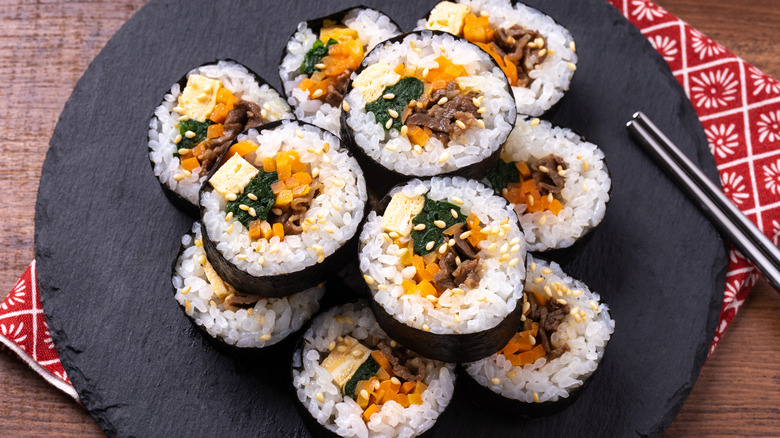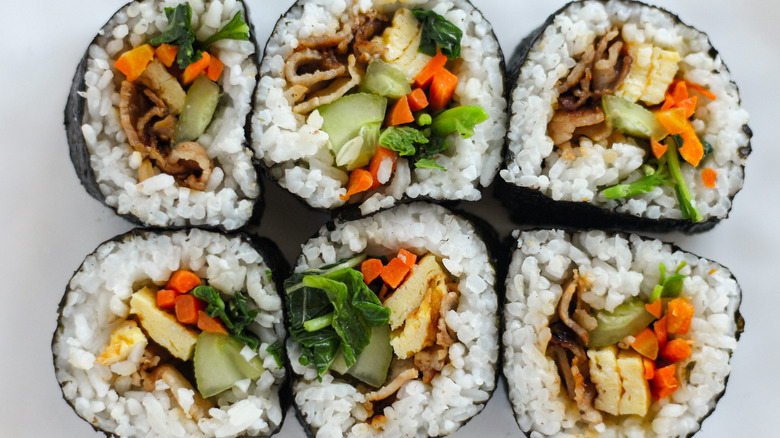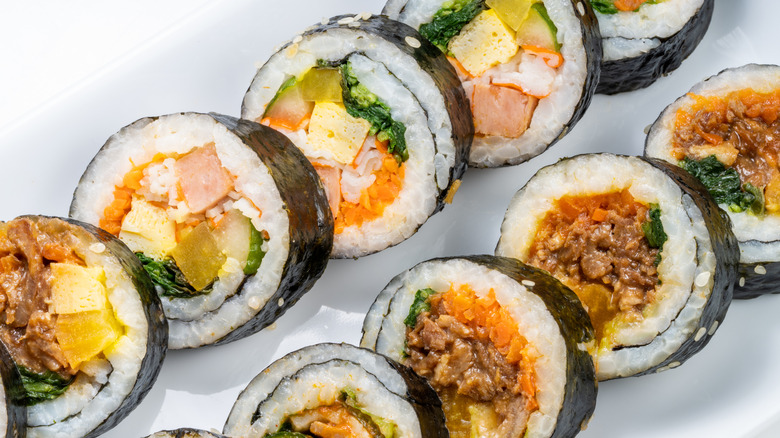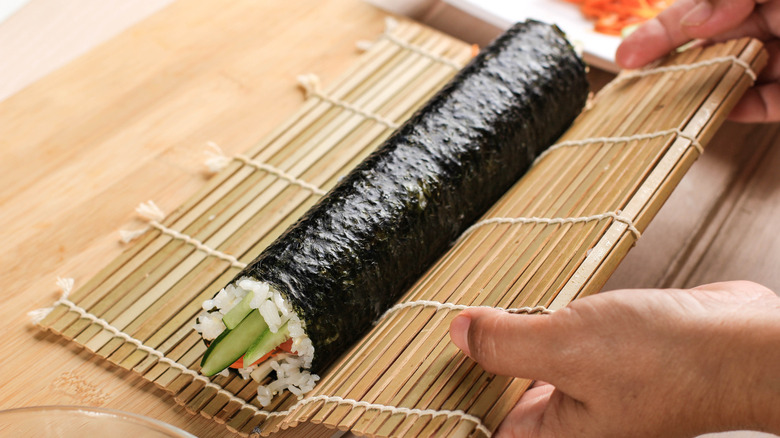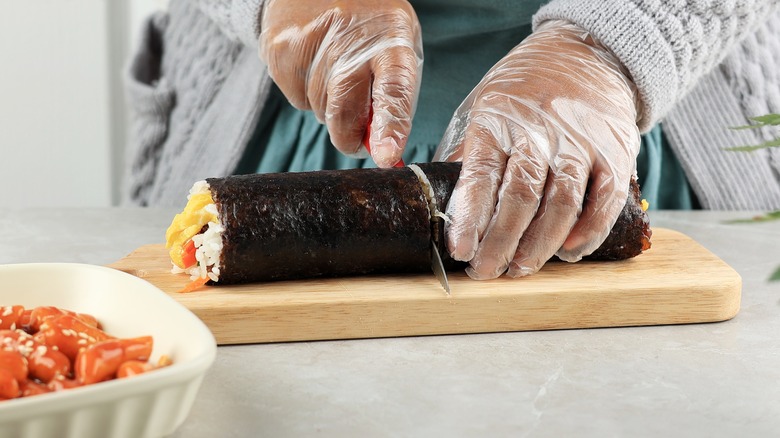An Expert's Advice For Perfecting Your Homemade Kimbap
If you're unfamiliar, kimbap (also commonly written as gimbap) is a Korean dish that resembles sushi and consists of rice, seaweed, and various fillings. While both kimbap and sushi can generally be defined as rice rolls with various ingredients inside, the two are distinct from one another in key ways. For example, sushi typically includes raw seafood, while kimbap usually contains cooked ingredients. Another important difference is in the seasoning. Sushi is seasoned with sushi vinegar, while kimbap is seasoned with sesame oil.
And much like sushi, it can definitely be overwhelming to approach making kimbap at home. But it doesn't have to be! Tasting Table spoke with an expert, Chef Ji Hye Kim, the founder of Miss Kim, a Korean restaurant located in Ann Arbor, Michigan, for the inside scoop on how to make kimbap at home, and why you should try it. When asked for advice on perfecting homemade kimbap, Kim said, "Don't overthink it! Instead of trying to stick to the fillings you've seen in a recipe, have fun making your own combination of flavors." Luckily, Kim's advice didn't stop there. Here are her four key tips to keep in mind.
Make sure the fillings aren't too wet
When it comes time to choose your kimbap fillings, it's important to keep a couple of things in mind. First and foremost, the fillings cannot be too wet. Kim suggests using ingredients like cucumbers, carrots, zucchini, and kimchi, and she also suggests drying them out in advance. For cucumbers, you can sprinkle salt onto slices (which will help draw out the water) and use a paper towel to pat them dry. For ingredients like carrots and zucchini, pan-frying them will remove some of that unwanted moisture. As for kimchi, be sure to squeeze out any juice before adding it to the kimbap.
Taking the time to dry the ingredients is essential. The last thing you want is to bite into a kimbap and be overwhelmed by excess moisture. Alongside avoiding moisture, Kim had another texture suggestion: "Think crunchy! Make sure you're adding something crunchy in there, like pickled yellow radishes or cucumber slices."
Think about balance when picking your fillings
Kim's next tip is all about balance. She said, "You wanna make sure you're going for a good balance of flavor and nutrients." In other words, you don't want to include too much of any one category of food. Kim noted that common kimbap protein ingredients include eggs, bulgogi, tuna, roasted chicken, and firm tofu.
As for how many types of protein to include in one kimbap, Kim suggests no more than two. Depending on how many other ingredients you want to include, it may even be best to stick to just one protein to avoid overstuffing. In the same vein, Kim explained that you'll want to include salty items as well, but that it's important to make sure the kimbap doesn't get too salty. Kim said to stick with "only one or two pickled items to play with other vegetables."
So, when choosing your fillings, aim for both variety and balance.
Make sure to roll the kimbap tightly
Assembling kimbap involves the following steps: Laying out the seaweed, spreading the rice out over the majority of the seaweed with about one or two inches left open at the top, then laying out the fillings over one portion of the rice. From there, you roll it up.
When it comes to the rolling part of the process, Kim stressed the importance of rolling it tightly but not too tightly. Again, balance is important. Kim said, "You want to make sure that the roll is tight and tucked in. Think rolling burritos. You want a tight enough roll that all the filling will stay in once you roll and cut them, but not so tight that [the] seaweed will pop."
It is a common practice to use a rolling mat, which is placed underneath the seaweed during preparation to help achieve the perfect roll.
Use a sharp knife to cut
The final step in making kimbap is to cut the roll into even pieces, typically about ½ inch thick. While they certainly don't have to be perfect since it's homemade, you will still want to cut the pieces as cleanly as possible. A high-quality knife is essential for this step. Kim said, "You don't want to do all that work and then butcher the kimbap when slicing. Having a sharp knife will help you make clean cuts and slices."
Once you have your sharp knife ready, there is a certain technique that Kim says is the most effective. She explained, "First you want to use a short sawing motion to cut through the outside seaweed. Once you slice into the top of the kimbap, through the seaweed, then you can slice through faster."
Of course, it's okay to not get it just right the first time around. Hopefully, Kim's advice will encourage you to keep making homemade kimbap. If you need a recipe to follow, you can start with Tasting Table's veggie kimbap.
